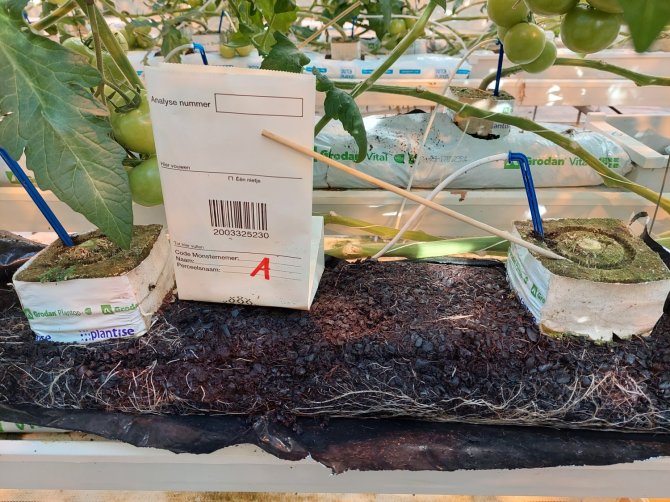
News
Search for alternatives for peat is about stability and hygienisation
In the coming decades, peat will be gradually replaced by circular growing media as a basis for potting soil and substrate. There are some promising alternatives. The Greenhouse Horticulture and Flower Bulbs Business Unit of Wageningen University & Research is investigating the advantages and disadvantages of these alternatives. Researcher Van Nguyen: “That search is mainly about balance between plant growth and microbial activities in the root zone.”
The use of peat in potting soil and substrate is under pressure. Fourteen organisations, including the Ministry of Agriculture, Nature and Food Quality, the TurfVrij Action Group and the Association of Potting Soil and Substrate Manufacturers in the Netherlands (VPN), therefore signed the Environmental Impact of Potting Soil and Substrates Agreement in 2023. It contains a step-by-step plan increasing the content of renewable raw materials. In 2025, professional substrate will consist of 35% renewable raw materials; for consumer products at least 60%.
WUR is investigating what combinations of renewable raw materials might take the place of peat. Which one is most suitable depends on many factors, such as availability, price, and environmental impacts. But perhaps the most important is the stability of the alternative. Most renewable raw materials support an active microorganism but when mixing a growing medium a balance must be found between the breakdown of material and nutrients used by the microlife on the one hand and the stability and crop nutrient requirements on the other hand.
This is especially the case with Miscanthus. This crop is becoming increasingly available these days. However, Miscanthus is not only suitable as a peat substitute, but can also be used as a biobased building material, for example. That puts pressure on availability. The main disadvantage of Miscanthus as a possible peat substitute is its stability. A healthy potting soil or substrate can therefore currently consist of a maximum of 30% Miscanthus.
Quite a different problem applies to Biochar (which is extremely stable). Biochar is produced by pyrolysis, which involves heating organic material with little or no oxygen. Biochar resembles charcoal, but producers of the material often make it too fine and quite alkaline. At present there are not enough suppliers but growers also need more information to properly fertigate mixes including biochar.
Pre-mixes (‘halffabrikaten’ in Dutch) seem to be the best alternative for the moment. Pre-mixes in this context are mixtures of green waste compost with agricultural and nature management crops (such as miscanthus, sphagnum, reeds and grasses). The advantage of pre-mixes is the availability of raw materials, the improved stability of the treated materials, and hygienisation of raw materials using the heat generated during composting process.
